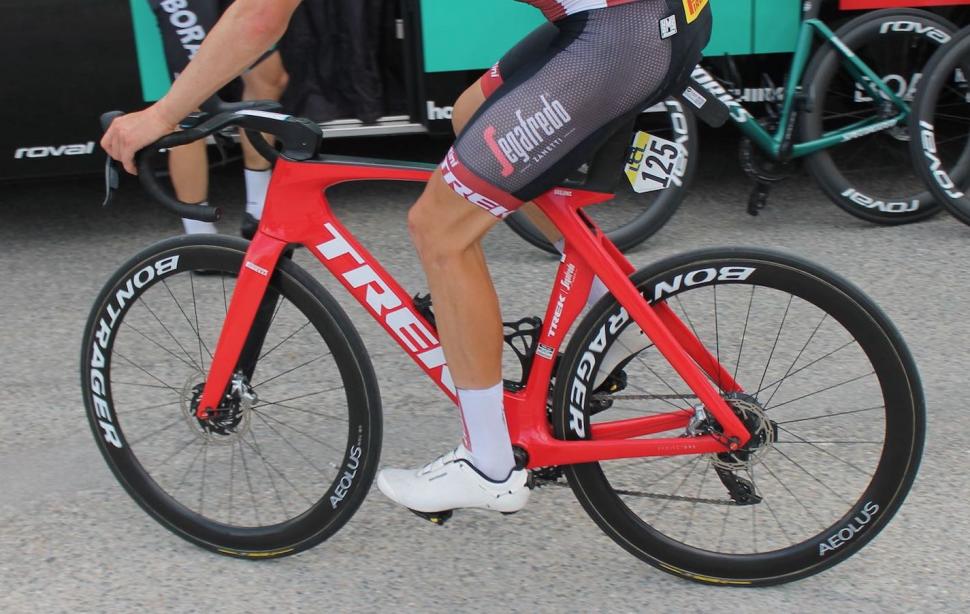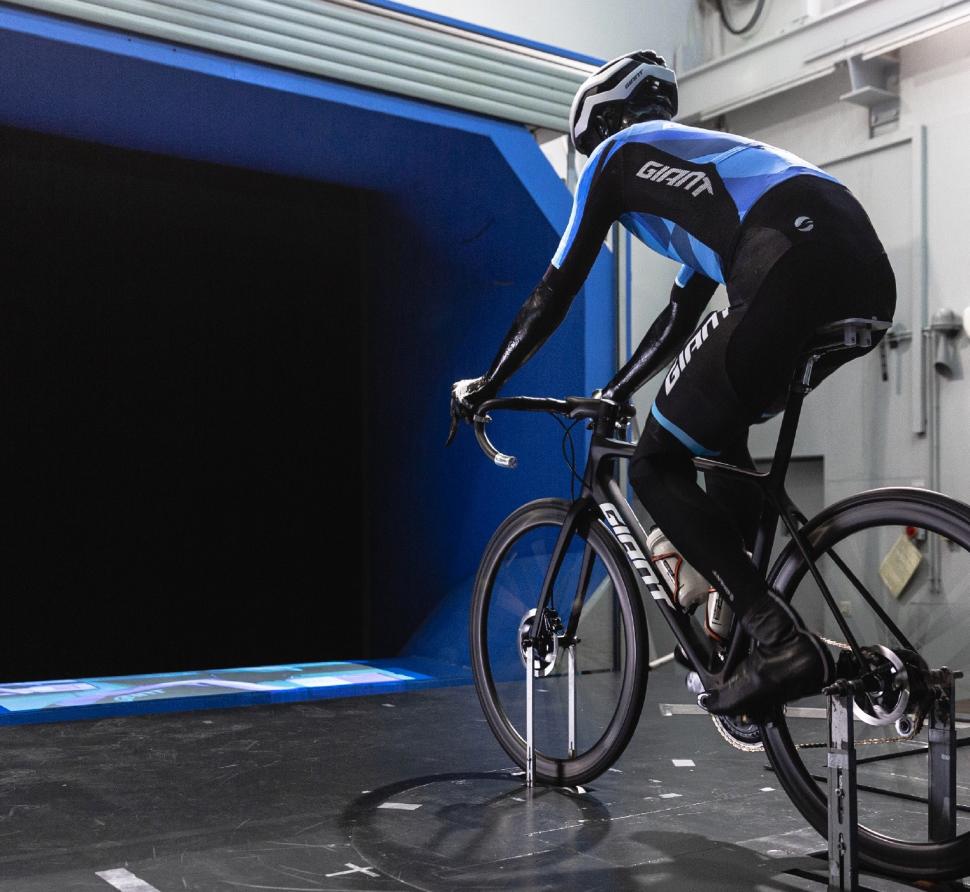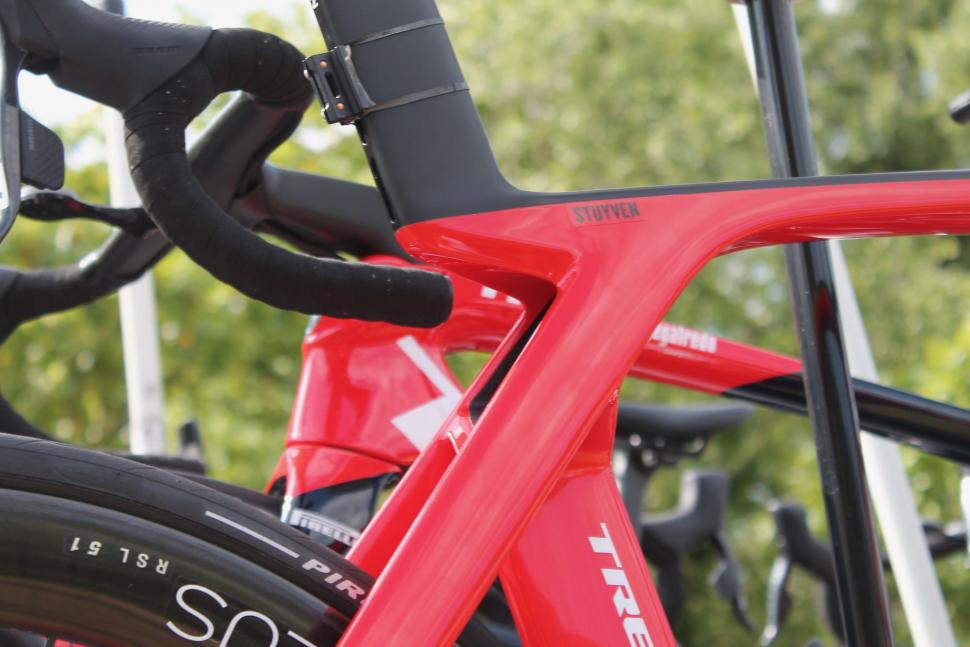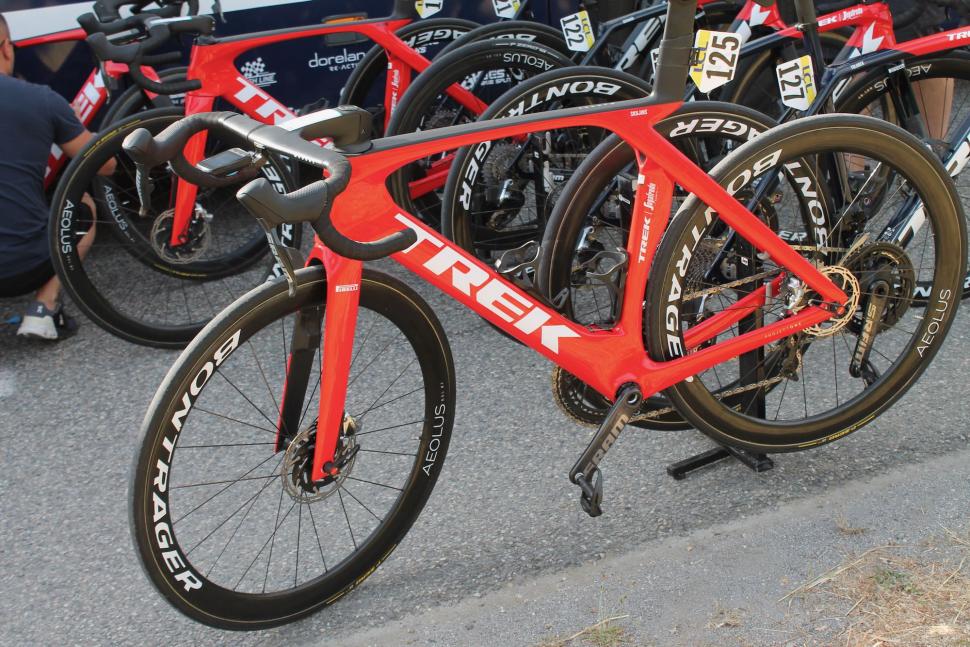- News
- Reviews
- Bikes
- Accessories
- Accessories - misc
- Computer mounts
- Bags
- Bar ends
- Bike bags & cases
- Bottle cages
- Bottles
- Cameras
- Car racks
- Child seats
- Computers
- Glasses
- GPS units
- Helmets
- Lights - front
- Lights - rear
- Lights - sets
- Locks
- Mirrors
- Mudguards
- Racks
- Pumps & CO2 inflators
- Puncture kits
- Reflectives
- Smart watches
- Stands and racks
- Trailers
- Clothing
- Components
- Bar tape & grips
- Bottom brackets
- Brake & gear cables
- Brake & STI levers
- Brake pads & spares
- Brakes
- Cassettes & freewheels
- Chains
- Chainsets & chainrings
- Derailleurs - front
- Derailleurs - rear
- Forks
- Gear levers & shifters
- Groupsets
- Handlebars & extensions
- Headsets
- Hubs
- Inner tubes
- Pedals
- Quick releases & skewers
- Saddles
- Seatposts
- Stems
- Wheels
- Tyres
- Health, fitness and nutrition
- Tools and workshop
- Miscellaneous
- Tubeless valves
- Buyers Guides
- Features
- Forum
- Recommends
- Podcast
feature
What's with the hole in the new Trek Madone? Aerodynamics analysed on radical 2023 superbike
It’s no secret that drag is a big deal; in fact, at a typical racing speed of 40kph, drag makes up about 90% of the total resistance. It’s therefore little surprise that manufacturers are going to great lengths in order to tame it, and when we spotted what is rumoured to be the new Madone at the Dauphine, Trek became the latest brand to chuck the metaphorical rulebook out the window.
> Radical new Trek Madone breaks cover at the Dauphine
Of course, we’ve seen some pretty radical solutions in the past. Ribble, for example, recently decided that chunky handlebars that would purportedly channel the airflow around the rider was the way forwards. Other brands have been dropping seat stays lower and lower and since the slight relaxing of the UCI rules, we’ve also seen the bottom bracket area getting chunkier like on the BMC Timemachine.
> Bike at Bedtime: check out Ribble’s radical Ultra aero road bike
> BMC releases all-new Timemachine Road aero bike
However, this is most definitely the first time that we’ve seen a split like this at the seat tube/top tube junction, and the etching on the inside means we can safely assume that Trek plans on calling it ‘Isoflow’. So why is it there? Well, the name suggests both comfort and aerodynamics, with this being the natural successor to ‘IsoSpeed’.
Now, without a wind tunnel or independent testing, it’s going to be very hard to say whether this will actually work... but I did do an aerospace degree and plenty of aerodynamics at university, so I might as well put it to good use with a bit of speculation!
> Bikes of the men's 2022 pro peloton
Let's start with some aerodynamic basics. Drag can broadly be split into three categories:
Pressure drag
This is caused by your frontal area and the wake you leave behind
Skin friction drag
This is sort of what it sounds like, essentially how much resistance surfaces such as your clothing, and freshly shaved legs create.
Shock drag
As not even Wout Van Aert is going at the speed of sound, we can discount that one in this case...
So, we’re now left with pressure drag and skin friction drag; which one should you be more worried about? Well at most speeds, pressure drag is the big one. Even the best cyclists in the world are still fairly un-aerodynamic objects in the grand scheme of things, so are referred to as 'bluff bodies'.
As mentioned earlier this pressure drag is influenced by both your frontal area and the wake behind you. It’s easy to think that your frontal area is the main cause and to an extent this is true, but only because that’s making the wake behind you bigger.
As you ride along, the flow of air separates around the body and bike, and forms a turbulent wake and low-pressure vortices behind the rider. This is what slows the rider down the most, in an aerodynamic sense at least.
> Buyers guide: 25 of the best and fastest 2021 aero road bikes
From CFD (Computational Fluid Dynamics) software it’s possible to see that a large ‘pool’ of this stagnant air sits directly behind the rider, and this is suspiciously close to where Trek has been doing its fettling. Typically, the movement of the legs causes a large amount of turbulence to the air around the seat post area. Much of this spills out around the legs, increasing the size of that all-important wake.
It would appear that Trek’s plan is that this hole will channel some of the faster-moving air from in front of the rider into the area of low pressure and slow-moving air just behind. If this is the case, then we can expect the usual claims of the bike being much faster. Well actually, we can probably almost guarantee those claims will be made…
Whether it actually works or not, unfortunately, we don’t know for sure. The science is promising but even with Trek’s large computational capability, CFD isn’t always 100% accurate. Just take this year's 'porpoising' controversy in Formula 1 as an example, where the cars have started to bounce aggressively at high speeds because they now generate a sizeable amount of their downforce from the underside of the floor following a radical overhaul of F1 rules.
The fact that it’s turbulent flow in this area makes the job even harder but as a general rule, even turbulent flow is preferable to air that isn’t moving.
On a more positive note, it is reassuring to see that more and more manufacturers are considering the rider and bike as a complete system. After all, a bike needs someone riding it to work. The seat tube looks set to be an area for continued development, and you can see that Hope’s track bike was perhaps ahead of its time in focussing on this area. Going forwards, I personally think that we’ll see plenty of other pretty funky seat stay/seat tube contraptions as brands try to eke out every last watt.
> Hope unveils prototype for the road-going version of Team GB’s Lotus track bike
Is aerodynamics your priority when buying a new race bike? Or are weight and comfort more important to you? Let us know in the comments below…
Jamie has been riding bikes since a tender age but really caught the bug for racing and reviewing whilst studying towards a master's in Mechanical engineering at Swansea University. Having graduated, he decided he really quite liked working with bikes and is now a full-time addition to the road.cc team. When not writing about tech news or working on the Youtube channel, you can still find him racing local crits trying to cling on to his cat 2 licence...and missing every break going...
Latest Comments
- Rendel Harris 1 hour 18 min ago
They were clipped, back wheel went sideways, they put their foot down to try and control the highside, braking at the same time and that flipped...
- Rendel Harris 1 hour 50 min ago
You did. But you also said "don't do things just because 'real cyclists' do them" which implies, well it doesn't so much as imply as much as state,...
- Cycle Happy 2 hours 12 min ago
I have the same light with the small Bluetooth remote to quickly switch modes. Overall, it's fantastic. My main gripe with it is when it reaches...
- Secret_squirrel 2 hours 13 min ago
Because the price points are so wide between 105 and DA.
- Simon E 2 hours 18 min ago
It's pretty unlikely that Wrexham council was looking to create cycling infrastructure in that part of the Ceiriog valley, which is out in the...
- HalfDanHalfBiscuit 2 hours 26 min ago
"blend in by day, stand out at night" I don't really want to blend in by day.
- No Reply 3 hours 2 min ago
That's irrelevant. Why should the customer be forced to pay for all the sports that they dont watch? Why have to pay for football when I don't want...
- chrisonabike 4 hours 8 min ago
A tragedy - sounds like one of those robotaxis though, are they allowed here? https://www.bbc.co.uk/news/articles/ce3le1z892vo
- Rich_M 4 hours 10 min ago
Great, thanks for your reply - much appreciated!
- ktache 6 hours 57 min ago
We have a new BKRY here in Cvrshm.








Add new comment
9 comments
Why the hole? It's so you are forced to buy their special seatpost.
I share your cynicism, but aren't all top-end aero bike seatposts custom/proprietary these days? In any case, I doubt someone who can afford £13.5k on a bike is going to be too bothered that they can't stick a Halfords' own-brand model in there...
I never liked Trek frames before this, that hasn't changed, this thing is fugly. Theres never any style or good design with Trek imo, so bland, so gneric.
Handy place to keep your baguette or a wedge of cheese or even a spare inner tube, be a bitch to clean on a regular basis though.
"at a typical racing speed of 40kph, drag makes up about 90% of the total resistance."
Of which 95 % is due to the cyclist, which leaves 5% for the bike. And how much of that is due to the bikes shape (as opposed to it's frontal area), 0,5% ?
The porpoising problem experienced by some F1 teams isn't due to the innacuracy of CFD; porpoising isn't a purely aerodynamic effect. Suspension geometry, spring rate, floor stiffness and track surface all contribute to it.
In the past, teams would have taken to the track to solve this issue, however track testing is now severly limited. They can't solve in the wind tunnel either, because current regs prevent them from operating the tunnel at sufficiently high speeds.
yes porpoising has been around since well before CFD existed, its a well known ground effect phenomenon, but I do think the worst extremes we are seeing in F1 now, is because CFD has taken those teams down design paths with much more instability in their aero/stiffness packages than they realised,just because theres a computed aero gain and they are chasing fractions of hundredths of seconds gain, but the optimum operating window for it is tiny.
and when I first saw this Trek madone bike, my reaction was, thats a CFD design, theres a computed aero gain from that setup, but how it works in the real world with far more random airflow around the seatpost area, we shall see, I think when it first came out I said lets see how much watts gain they claim for it, when its properly released.
I don't think it matters how much more aero the new Madone is. As intriguing as it looks I wonder if it's been tested under a 100kg 6'4" rider on potholed roads. That's going to be a huge lever taking a lot of force.
Nice CFD, where do I get the zero-drag skinsuit the rider is wearing?